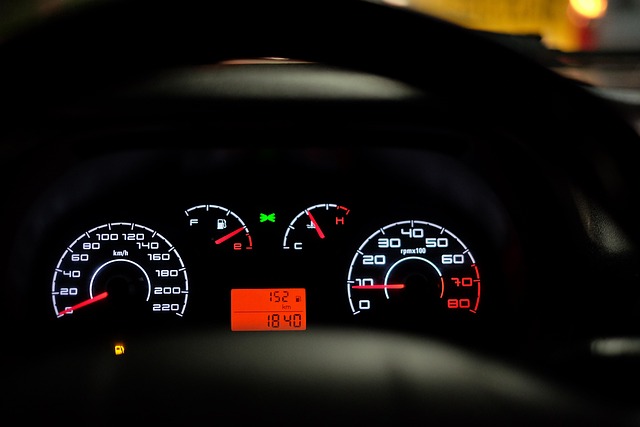Registering a car in California involves understanding specific requirements and gathering essential documents. This comprehensive guide walks you through the process, ensuring a smooth transition from owner to registered vehicle. From confirming your vehicle’s identity through a crucial VIN verification process, to submitting applications and fees at the DMV, we cover every step. By following these clear instructions, you’ll be driving legally on California roads in no time.
- Understand California Car Registration Requirements
- Gather Necessary Documents for VIN Verification
- Perform Vehicle Identification Number (VIN) Check
- Submit Application and Fees to DMV
- Receive Your California Registration Plate
Understand California Car Registration Requirements

Before registering your car in California, it’s essential to understand the state’s specific requirements for vehicle identification number (VIN) verification. California law mandates a rigorous process to ensure all vehicles on its roads meet safety and environmental standards. This involves a comprehensive VIN inspection that checks for any outstanding issues or recalls related to the vehicle’s history.
The process typically includes submitting accurate and complete documentation, including proof of ownership and valid insurance. Additionally, many residents opt for a convenient mobile vin verification service, allowing them to complete the registration from the comfort of their homes or offices. A mobile vin verifier can conduct a thorough inspection, cross-referencing the VIN with national databases to ensure the vehicle’s legality and safety compliance before processing the registration.
Gather Necessary Documents for VIN Verification

Before you begin the registration process in California, it’s crucial to gather all the essential documents required for VIN verification. The Vehicle Identification Number (VIN) is a unique code that identifies your car, and this verification step is a critical part of the registration procedure. For a seamless process, ensure you have the following documents ready: vehicle ownership papers, current registration certificate, proof of insurance, and identification documents like a driver’s license or state ID card. Additionally, some facilities offer mobile VIN verifier services, which can be convenient for on-the-go verification, providing an alternative to traditional vin inspection.
California’s Department of Motor Vehicles (DMV) may also require additional paperwork based on the age and make of your vehicle, so it’s beneficial to check their official website for a comprehensive list. Having all these documents prepared will streamline the registration process, whether you’re doing it at a DMV office or opting for a mobile vin inspection service.
Perform Vehicle Identification Number (VIN) Check

Before you register your car in California, performing a Vehicle Identification Number (VIN) check is a crucial step. This process involves verifying the authenticity of your vehicle’s VIN, which serves as a unique identifier for the car. You can conduct this vin verification through various official channels, including online services and mobile vin inspection apps.
A mobile vin inspection or mobile vin verification service allows you to quickly and easily obtain the necessary information about your car’s history. By entering your VIN into an app, you gain access to detailed records such as accident reports, odometer readings, and previous ownership details. This ensures that the vehicle is in good standing and meets California’s registration requirements, making the registration process smoother for both you and the DMV.
Submit Application and Fees to DMV

After gathering all the necessary documents, it’s time to submit your application and fees to the California DMV. This crucial step involves filling out the appropriate forms, which can be done online or in-person at a local DMV office. Along with your completed application, you’ll need to pay the required fees for vehicle registration and title transfer.
Ensure that you’re completing the process accurately by double-checking your information. One essential aspect of this step is confirming your vehicle’s VIN (Vehicle Identification Number) through a valid vin inspection or vin verification. This can be done conveniently with a mobile vin inspection service, providing quick and reliable results to expedite your registration.
Receive Your California Registration Plate

After completing your California car purchase, it’s time to receive your new registration plate. This crucial step involves a process known as VIN verification, which ensures the vehicle’s identity and history are accurately checked. You can conduct this verification through a mobile vin verifier or even perform a simple online inspection using your Vehicle Identification Number (VIN). By verifying your car’s VIN, you’ll have peace of mind knowing that all records are in order before hitting the California highways.
Once the VIN verification is complete, you’re one step closer to registering your vehicle officially. The state of California will issue your unique registration plate, which serves as both a legal requirement and a distinctive mark of ownership. With this plate securely fastened to your car, you’re ready to navigate the Golden State’s roads legally and enjoy the freedom that comes with proper vehicle registration.
Registering a car in California involves understanding state requirements, gathering essential documents, and completing a VIN verification process. By adhering to these steps—from preparing your paperwork to submitting applications and fees—you’ll be well on your way to securing your vehicle’s registration in the Golden State. Remember, a proper vin verification is key to ensuring everything is in order.
